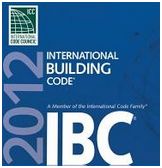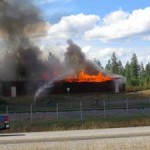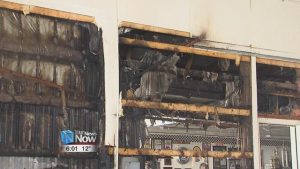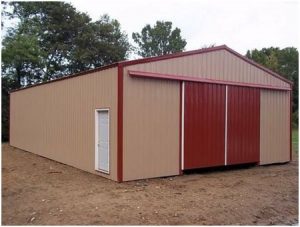Some Building Code History
I’ve reflected some in the past about Building Codes from history, where the generally accepted first code was in the Code of Hammurabi: https://www.hansenpolebuildings.com/2013/07/engineer/.
In July of 64 A.D., a great fire ravaged Rome for six days, destroying 70 percent of the city and leaving half its population homeless. According to a well-known expression, Rome’s emperor at the time, the decadent and unpopular Nero, “fiddled while Rome burned.” The expression has a double meaning: Not only did Nero play music while his people suffered, but he was an ineffectual leader in a time of crisis. It’s been pretty easy to cast blame on Nero, who had many enemies and is remembered as one of history’s most sadistic and cruelest leaders—but there are a couple of problems with this story.
 For one thing, the fiddle didn’t exist in ancient Rome. Music historians believe the viol class of instruments (to which the fiddle belongs) was not developed until the 11th century. If Nero played anything, it would probably have been the cithara, a heavy wooden instrument with four to seven strings—but there is still no solid evidence he played one during the Great Fire. The Roman historian Tacitus wrote Nero was rumored to have sung about the destruction of Troy while watching the city burn; however, he stated clearly this was unconfirmed by eyewitness accounts.
For one thing, the fiddle didn’t exist in ancient Rome. Music historians believe the viol class of instruments (to which the fiddle belongs) was not developed until the 11th century. If Nero played anything, it would probably have been the cithara, a heavy wooden instrument with four to seven strings—but there is still no solid evidence he played one during the Great Fire. The Roman historian Tacitus wrote Nero was rumored to have sung about the destruction of Troy while watching the city burn; however, he stated clearly this was unconfirmed by eyewitness accounts.
When the Great Fire broke out, Nero was at his villa at Antium, some 35 miles from Rome. Though he immediately returned and began relief measures, people still didn’t trust him. Some even believed he had ordered the fire started, especially after he used land cleared by the fire to build his Golden Palace and its surrounding pleasure gardens. Nero himself blamed the Christians (then an obscure religious sect) for the fire, and had many arrested and executed. But while Nero may have been guilty of many things, the story of him fiddling while Rome burned belongs firmly in the category of popular legend rather than established truth.
In reality the fire was not the fault of Nero. Narrow streets, tall buildings, combustible building materials and common walled buildings contributed to the fire’s devastation.
Nero created a new urban plan, following the fire, one which featured wider streets, restrictions on the height of houses; no common walls of buildings and homes which were constructed with fire resistant material such as stone instead of wooden pillars.
Of course to many, building codes are unquestionable safety measures which prevent repeats of historic disasters. American’s relationship with building codes has always revolved around disasters, starting with the original Boston building code which outlawed thatched roofs and wooden chimneys in 1631. Fire safety also inspired new building codes after the disastrous fires in London in 1666 and Chicago in 1871.
Over the years, new codes were created and enforced to protect neighbors from unsafe structures and address the relationships between different buildings. By 1940, three regional code organizations had emerged in the United States. In 2000, the three organizations merged and consolidated into the International Code Council (ICC), which is still active today.
The ICC has been responsible for publishing and enforcing all building codes (known as I-codes), which address specific issues such as energy use, plumbing access, and fire escapes. Today, I-Codes continue to reflect the lessons we’ve learned the “hard way.” For example, utility outages during Hurricane Sandy prompted New York City to convene a special task force and create new codes to increase and maintain access to water and electricity in residential buildings.
There is a common feeling of resistance to having to figure out exactly, and follow local building codes. Unfortunately by bucking the code, people, their beloved pets and possessions are put at great risk. The codes are written for the safety of all of us. Do yourself and your loved ones a favor: Find out what the code says for your next building, and follow it!
 When I hear about a pole building burning down, especially one used for commercial purposes, it makes me wonder why the building did not have automatic fire sprinklers? With an installed cost generally of $1 to $1.50 per square foot, sprinkler systems are a bargain – cheaper than the cost of a nominal four inch thick concrete floor.
When I hear about a pole building burning down, especially one used for commercial purposes, it makes me wonder why the building did not have automatic fire sprinklers? With an installed cost generally of $1 to $1.50 per square foot, sprinkler systems are a bargain – cheaper than the cost of a nominal four inch thick concrete floor. “Also helping at the scene was the Oahe Chapter of the American Red Cross. No other structures are located on the old farmstead near the pole barn, but Kruger says the 65 X 120 building contained farm equipment, balers, and feed. Also, there were pigs in the building and Kruger says some of the animals succumbed to the fire.”
“Also helping at the scene was the Oahe Chapter of the American Red Cross. No other structures are located on the old farmstead near the pole barn, but Kruger says the 65 X 120 building contained farm equipment, balers, and feed. Also, there were pigs in the building and Kruger says some of the animals succumbed to the fire.” Firewalls are sometimes required in order to enclose egress paths, often hallways. This is so that people (or animals) trying to escape (or be rescued) from a burning building have a good chance of getting out without the building collapsing on them. Besides testing to see if the walls didn’t let the fire through, they also were tested for structural integrity to keep the weight of the roof from collapsing and crushing whoever is inside.
Firewalls are sometimes required in order to enclose egress paths, often hallways. This is so that people (or animals) trying to escape (or be rescued) from a burning building have a good chance of getting out without the building collapsing on them. Besides testing to see if the walls didn’t let the fire through, they also were tested for structural integrity to keep the weight of the roof from collapsing and crushing whoever is inside.





